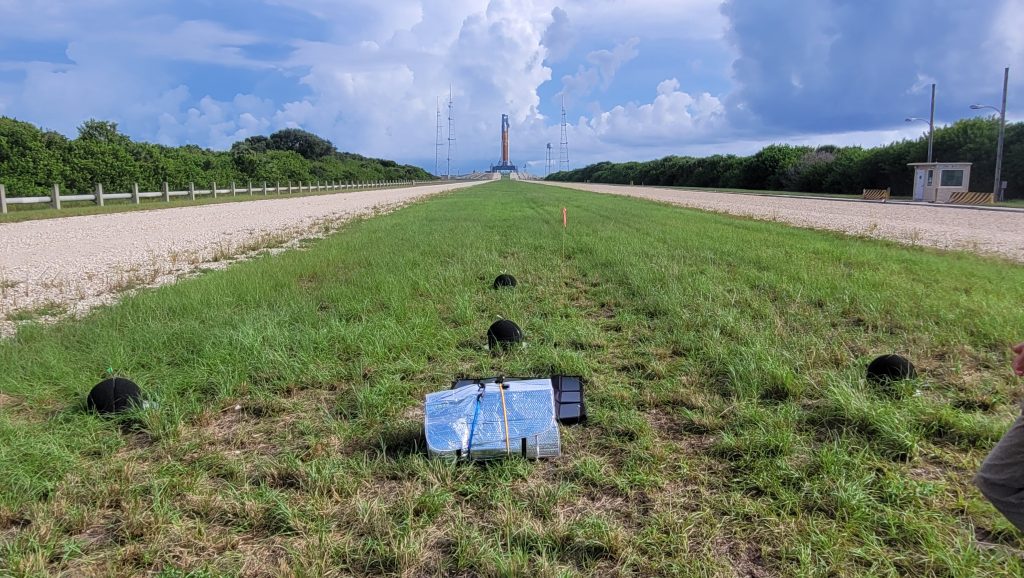Measurements taken at locations around the launch pad revealed noise levels as high as 136 decibels from 1.5 km away
From the Journal: JASA Express Letters

Credit: Kent Gee
WASHINGTON, Feb. 14, 2023 – When the Artemis 1 mission was launched by NASA’s Space Launch System, SLS, in November, it became the world’s most powerful rocket, exceeding the thrust of the previous record holder, Saturn 5, by 13%. With liftoff came a loud roar heard miles away.
In JASA Express Letters, published on behalf of the Acoustical Society of America by AIP Publishing, researchers from Brigham Young University and Rollins College in Florida reported noise measurements during the launch at different locations around Kennedy Space Center.
The data collected can be used to validate existing noise prediction models, which are needed to protect equipment as well as the surrounding environment and community. These data will be useful as more powerful lift vehicles, including the SLS series, are developed.
“We hope these early results will help prevent the spread of possible misinformation, as happened with the Saturn 5,” author Kent Gee said. “Numerous websites and discussion forums suggested sound levels that were far too high, with inaccurate reports of the Saturn 5’s sound waves melting concrete and causing grass fires.”
The combination of nighttime darkness, humidity, and backlighting provided a rare opportunity to view propagating pressure waves, which can be seen in the accompanying video.
Artemis 1 was launched with four liquid hydrogen-oxygen engines plus two solid-fuel rocket boosters (SRBs). According to the authors, the SRBs are likely the dominant noise source during liftoff.
The investigators studied recordings at microphones located 1.5 km to 5.2 km from the launch pad. All stations were outside the blast danger area. Maximum noise levels at all five stations exceeded those predicted in a preliminary assessment.
At 1.5 km from the pad, the maximum noise level reached 136 decibels. At a 5.2 km distance, the noise was 129 decibels, nearly 20 decibels higher than predicted by a prelaunch noise model.
“This suggests a need to revisit and probably revise those models,” author Grant Hart said.
A procedure known as A-weighting is often used to assess the impact of noise on humans. Because we don’t hear as well in some frequency ranges as others, a filter is applied to emphasize the sounds we do hear. Using this method, the investigators found noise levels at 5.2 km from the launchpad were about as loud as a chainsaw.
A characteristic feature of rocket launches is a crackling sound from shock waves. These shocks represent instantaneous sound pressure increases that are much louder than crackling noises encountered in everyday life.
Author Whitney Coyle said, “We found the Artemis-I noise level at 5 km had a crackling quality about 40 million times greater than a bowl of Rice Krispies.”
“Although this study is an important step forward, we still have a long way to go to understand everything about the generation, propagation, and perception of rocket noise,” Gee said.
###
Article Title
Space launch system acoustics: Far-field noise measurements of the Artemis-I launch
Authors
Kent L. Gee, Grant W. Hart, Carson F. Cunningham, Mark C. Anderson, Michael S. Bassett, Logan T. Mathews, J. Taggart Durrant, Levi T. Moats, Whitney L. Coyle, Makayle S. Kellison, and Margaret J. Kuffskie
Author Affiliations
Brigham Young University and Rollins College (Florida)
